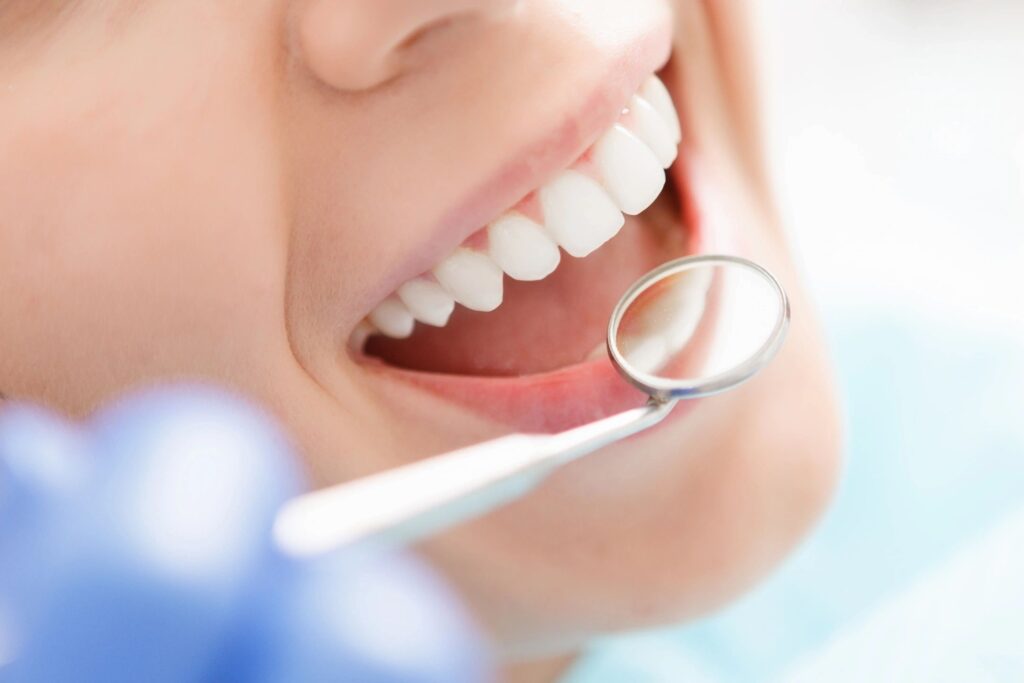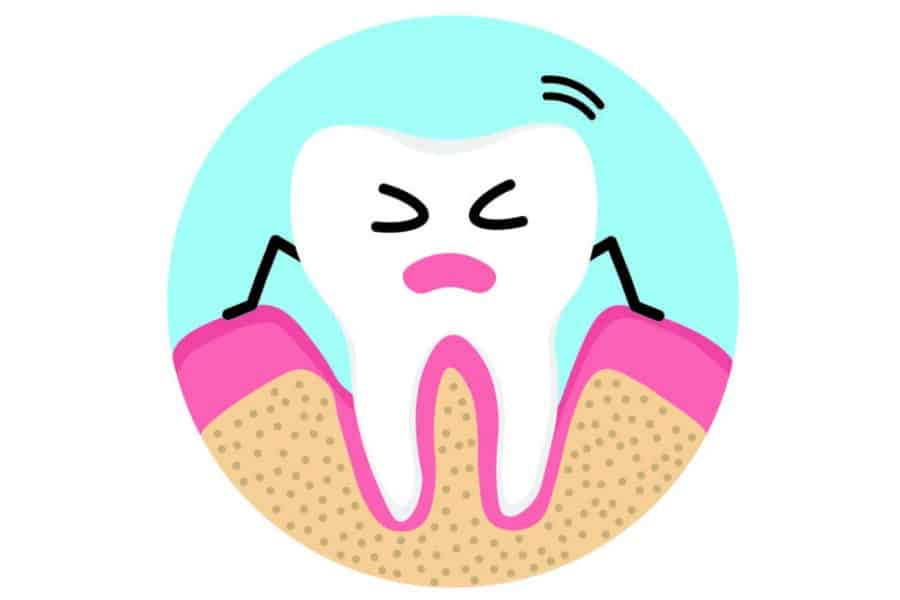Every time you smile in the mirror, you see your teeth. But have you ever looked at your gums? Being familiar with your gums and noticing changes can help you identify gum problems early. If noticed early, most gum issues can be treated easily and successfully.
What do our gums do?
Gums are soft tissues that cover the jawbone that holds your teeth. Healthy gums form a seal against your teeth to keep them protected. Without a healthy seal, your teeth and gums are vulnerable to disease. Gum disease is an infection that is common and causes not just mouth issues but also contributes to overall health issues.
Our gums not only support a healthy smile but also an attractive one. Healthy gums offer a shape around our teeth that gives us the best appearance. If gums are infected, discolored, or swollen over teeth or pulling away from them, we may feel uncomfortable about our smiles.
Gums also support our dental work as well. When your dentist places a filling, crown, or partials, our gums are part of their support system. Gums that are overgrown or receded can make dental work fail. Having properly fitting dental work relies on strong and healthy gums.
That is why getting to know your gums today is important for protecting your teeth and your overall health.
What signs should I look for with my gums?
Next time you brush your teeth, take a moment to look at your gums. In your mirror gently lift your lip in various directions to notice how the gums fit around your front and back teeth. Notice the color and shape of your gums. Also, note if you notice any areas that look like they are puffy or pulling away from your teeth. If you noticed any bleeding with brushing, try to identify where that bleeding was in your mouth.
If everything looks healthy, great! Your home-check gives you a good starting point moving forward so you can monitor your gums for any future problems.
If you see any of the following symptoms, please consult with your dentist:
- Redness
- Bleeding
- Puffiness or swelling
- Thick tissue that makes teeth look short
- Thinning gums that pull away from teeth
Why should I be concerned about my gums?
Typically, gum issues get worse without treatment. So, identifying gum problems early can help you prevent worse outcomes.
Having gum abnormalities such as overgrowth or gum recession can lead to a gum infection called periodontal disease, which can cause tooth loss and affect your overall health. Poor gum health can also cause tooth problems such as tooth sensitivity, tooth decay on roots of your teeth, and ill-fitting or even failed dental work.
Can gum problems be treated?
Yes! Treating gum problems is easier than ever before because of modern treatments.
If you are diagnosed with a gum problem, you will be referred to a gum specialist called a Periodontist who can offer specifically designed treatment to repair your gums for both functional and cosmetic needs. Your periodontist may recommend therapy that involves gum reshaping, which is also referred to at gingival contouring.
Gingival contouring can be done in-office using state-of-the-art surgical procedures such as laser therapy. These procedures can repair thin tissue for protection and reshape overgrown tissue for a more pleasing look of your gums around your teeth.
What are the different types of gum reshaping treatments?
Typically, procedures are designated as either functional or cosmetic.
Functional gum treatment is often considered therapeutic because it helps to prevent and treat disease. Cosmetic gum treatment is considered an esthetic treatment because it helps to improve the look of the teeth and gums, which improves the look of your smile.
Both types of treatments are important for overall health and well-being.
Functional or therapeutic gum treatment:
Functional treatments are generally performed to help prevent or treat gum and tooth issues that can affect your health and chewing functions if left untreated.
Thin or receded gums can cause tooth sensitivity and lead to root cavities. Without proper gum support, the bone that holds your teeth can become vulnerable to periodontal disease. Abnormal gum shape and attachment can cause your dental work to fail. Fortunately, your periodontist can offer treatments.
Your periodontist can treat your gum recession with a procedure known as a gum graft or gingival graft. This procedure not only repairs thin gum tissue but also helps to protect your teeth and make your home care easier.

Sometimes, gums require reshaping to help preserve your dental work. For example, in order for a crown to fit your tooth correctly, your dentist may refer you to the periodontist for a procedure called crown lengthening, which reshaped the gums around the tooth so that your dentist can create a crown a better fit that will improve the lives of the crown.
Cosmetic or esthetic gum treatment:
After getting to know your gums, you may notice that you seem to have a thick or gummy smile. Maybe when you smile, you see more of your gums than you see in the smile of others. Maybe your teeth look short or small.
What you may not know is that your periodontist can help you improve your smile through minimally invasive procedures like gingival contour sculpting. Gingival contouring for esthetics involves crown lengthening that is similar to therapeutic procedures. But esthetic crown lengthening helps to create a more even gum line and improves the smile.
Although it may be considered cosmetic, esthetic crown lengthening improves your smile, which can improve your sense of happiness and well-being. Studies show that smiling improves your mood. But if you are self-conscious about your smile, you may not smile as often. When you like your smile, you can speak, smile, and laugh without limits and enjoy life!
